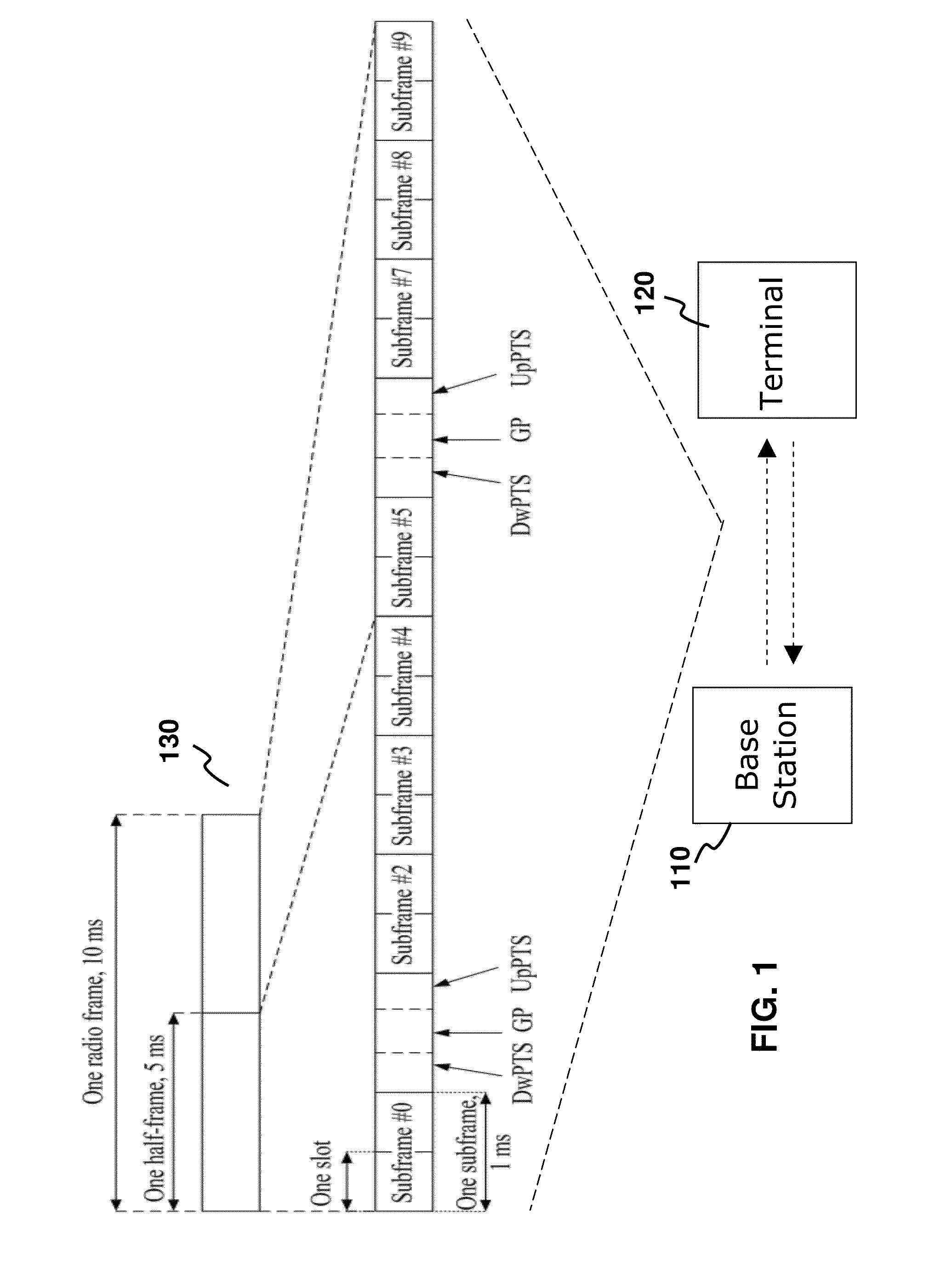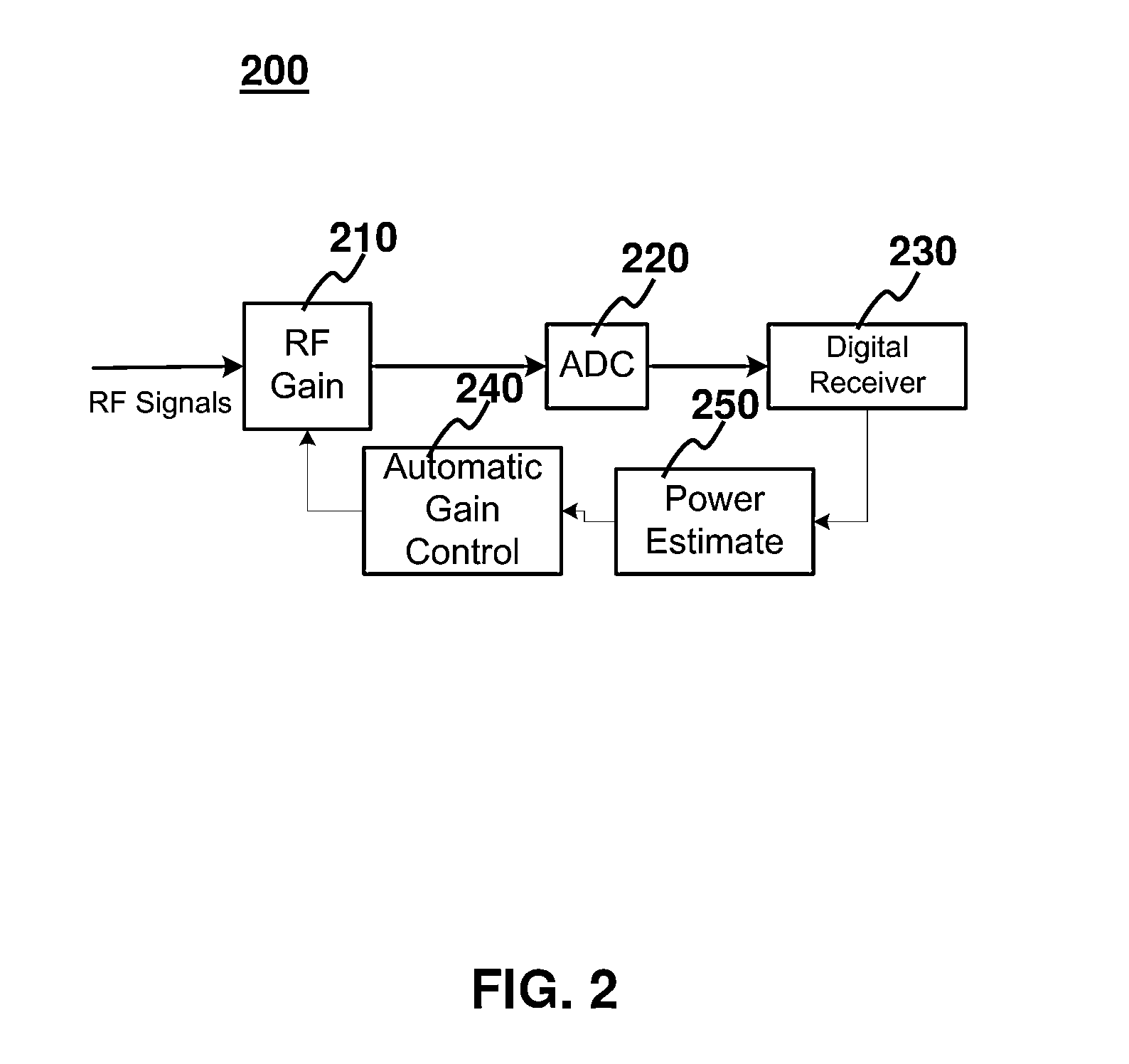Method and apparatus for automatic gain control in a td-lte system
a terminal receiver and automatic gain control technology, applied in the field of automatic gain control for a long-term evolution (lte) terminal receiver, can solve the problems of data loss at the beginning of the time slot, significant degradation of signal-to-noise ratio (snr), and large slot-to-slot variation in the received power, so as to achieve efficient power use of the terminal and avoid excessive power draining
- Summary
- Abstract
- Description
- Claims
- Application Information
AI Technical Summary
Benefits of technology
Problems solved by technology
Method used
Image
Examples
Embodiment Construction
[0026]FIG. 1 depicts a block diagram of a communications system in accordance with some embodiments of the present invention. Signals are communicated between a base station 110 (also known as an e-Node B) and one or more terminals 120 (also known as a user equipment). The signals such as TD-LTE signals are transmitted based on a radio frame 130, for example, with a frame length of 10 ms. One radio frame 130 contains 10 subframes and is used for uplink (UL) or downlink (DL) transmission based on a UL / DL configuration. The UL / DL configuration will be available from the broadcast of the base station 110. In one embodiment, the frame structure of the radio frame 130 is adopted by the present invention.
[0027]FIG. 2 depicts a block diagram of a terminal which incorporates AGC in accordance with some embodiments of the present invention. A RF signal is received by the receiver 200. Each terminal has at least one receiver 200. The RF signal is amplified by an RF gain 210 before converting ...
PUM
 Login to View More
Login to View More Abstract
Description
Claims
Application Information
 Login to View More
Login to View More - R&D
- Intellectual Property
- Life Sciences
- Materials
- Tech Scout
- Unparalleled Data Quality
- Higher Quality Content
- 60% Fewer Hallucinations
Browse by: Latest US Patents, China's latest patents, Technical Efficacy Thesaurus, Application Domain, Technology Topic, Popular Technical Reports.
© 2025 PatSnap. All rights reserved.Legal|Privacy policy|Modern Slavery Act Transparency Statement|Sitemap|About US| Contact US: help@patsnap.com



